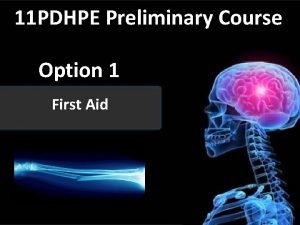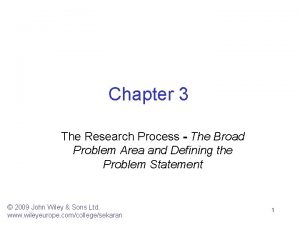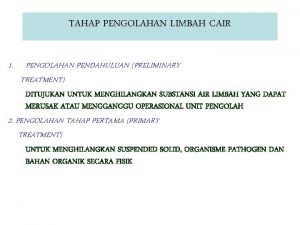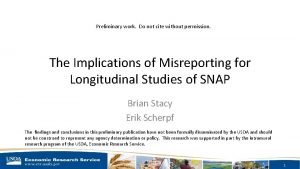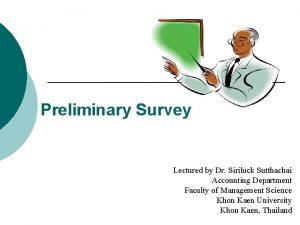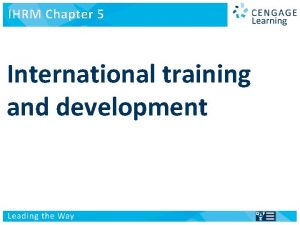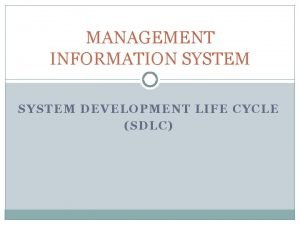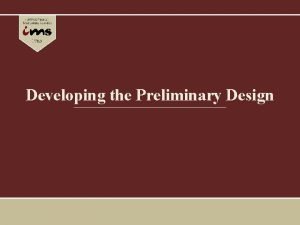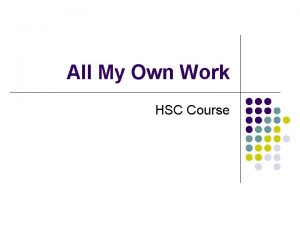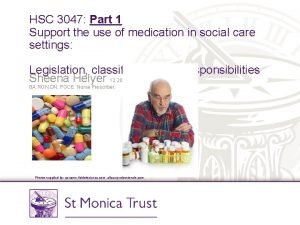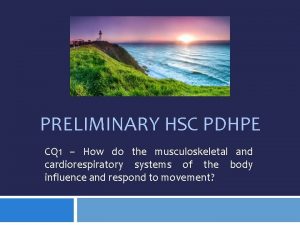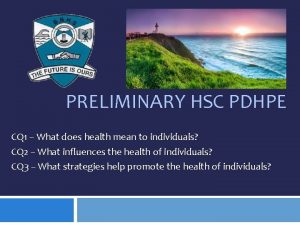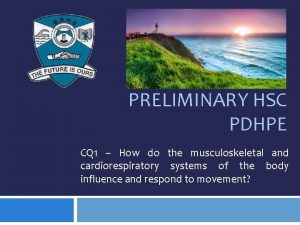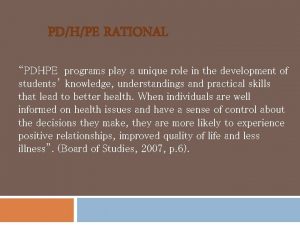PRELIMINARY HSC PDHPE CQ 3 What strategies help



























































































- Slides: 91

PRELIMINARY HSC PDHPE CQ 3 – What strategies help promote the health of individuals?

What strategies help to promote the health of individuals? Students learn about: Students learn to: what is health promotion describe the various health promotion roles and responsibility for health promotion responsibilities adopted by individuals, groups and individuals governments community groups/schools non-government organisations government international organisations, eg WHO, United Nations – – – health promotion approaches and strategies lifestyle/behavioural approaches, eg quit smoking programs, health education preventative medical approaches, eg childhood immunisation, cancer screening public health approaches, eg health-promoting schools and workplaces the Ottawa Charter as an effective health promotion framework developing personal skills creating supportive environments strengthening community action reorienting health services building healthy public policy principles of social justice Equity Diversity Supportive environments. determine the effectiveness of a range of health promotion strategies relevant to young people, eg government interventions relating to alcohol consumption and young drivers propose other actions that may improve the health of young people describe the historical significance of the Ottawa Charter for Health Promotion explain how health promotion based on the action areas of the Ottawa Charter have contributed to positive health outcomes. For example: reduction in road injuries reduction in tobacco use identify strategies where the principles of social justice have been applied to promote the health of individuals.

Critical Question 3: What strategies help to promote the health of individuals? Health promotion involves activities that are aimed at enabling people to increase control over their health, to improve their health and prevent illness. Health is the result of a complex interaction of people’s personal health behaviours and a range of social, economic, cultural and environmental determinants that exist in the society in which they live. These wider social and cultural forces can shape or limit an individual’s decision making, affect power relations, and can determine the amount of control an individual has over his or her actions. For some people, these factors are conducive to good health; that is: � � they have acquired the knowledge, understanding and means to make positive health decisions they live and work in environments that support them in making health promoting choices.

Others may be influenced by factors that prevent them making good health decisions or limit their ability to easily make choices that will promote better health. For example, they may have poor nutrition due to lack of money, poor availability of nutritious foods in their local area or lack of knowledge of nutrition. It is now widely accepted that, in order to improve the health and wellbeing of individuals and reduce the burden of preventable diseases, health services need to consider not only factors related to the individual, but also factors relating to the broader community, environment and social context in which people live. If individual behaviour change is to occur it needs to be supported by a variety of social, cultural, economic and political changes to our environment.

1. What is health promotion? Health promotion aims to achieve better health for everyone. It is the process of preventing ill health and advancing the health of individuals and the community through planned interventions. The World Health Organization defines health promotion as ‘the process of enabling people to increase control over their health and improve their health’. This definition underpins a global approach to health promotion initiated by the World Health Organization. In 1986 this definition was incorporated in a document known as the Ottawa Charter for Health Promotion that was developed as part of the first International Conference for Health Promotion.

The Ottawa Charter outlines essential actions for effective health promotion and is based on the understanding that health is socially determined. It recognises the importance of a broad range of approaches to health promotion that assist people to gain greater control over their health and improve their health outcomes. These approaches need to: � � � focus on the prevention of ill health, not just on treating illness provide resources and opportunities for individuals and groups to achieve positive health include school and community health education include resources to support healthy living and working environments ideally, provide equal access to health and physical activity resources for everyone include legislation, policies and economic conditions to protect people from harm.

Health promotion therefore is more than teaching students the importance of good health or promoting lifestyle behaviours that reduce the chance of diseases developing in later life. It involves: � recognising the social, economic, behavioural, environmental and lifestyle factors that contribute to the lifestyle-related health problems that are currently prevalent � seeking to address these factors in order to support behavioural change.

Without the provision of systems that help create supportive environments and promote improvements in people’s health behaviours, significant improvements in the health of individuals and populations will not occur. The following summary lists the environmental and educational support systems that enable supportive environments to be created. � � � � Government legislation. Some laws guard our health and well-being. For example, laws about the wearing of seatbelts and drink driving limit the number and severity of road crashes. Government regulations. These controls ensure that communities maintain certain standards in health practices. For example, regulations on the information that must be provided on food labels ensure consumers are well informed. Physical supports. These include the provision of hospitals, nursing homes, surgeries and community health centres. Economic supports. Governments must allocate sufficient money to support health and welfare programs and enable them to function effectively. Social supports. These include health personnel and community groups who are trained and equipped to assist in health care, such as doctors, nurses, counsellors, support groups and social workers. Educational supports. These include traditional health education programs in schools, as well as information, education and advice provided in other settings; For example: community education via the Quit website. A combination of these support systems, rather than any single factor such as advertising, is most effective in bringing about behavioural changes needed to improve our health.


Research has also shown that effective health promotion must involve the community at all levels. People must feel that they are a part of the system, and that an improvement in their attitudes and practices will be an improvement for everyone.

What is health promotion? In groups, recall and list any health promotion strategies or initiatives that have been introduced to address the following health concerns: � tobacco smoking � binge drinking � depression � road injuries � skin cancer

2. Responsibility for health promotion A wide range of people and groups have responsibility for promoting better health. These include: Individuals community groups and schools non-government organisations various levels of government international organisations. For health promotion to be effective, a coordinated approach by all people and organisations involved is needed to successfully plan, develop and deliver initiatives that address identified areas of concern

Individuals Individuals play a key role in promoting their own health, because personal behaviour is the major determining factor of health status. Ill health can be prevented by making choices that promote health and leading a healthy lifestyle. However, the living conditions of some people limit their ability to easily make healthy choices and prevent them from taking control of their health, leaving them vulnerable to illness and disease. For health promotion to be effective, individuals need to be empowered. Individual empowerment refers to an individual’s ability to make decisions about, or have personal control over their life.

Individuals We need to be encouraged to participate in improving our level of health. This is best achieved when we are: provided with accurate and relevant health information that is presented in a format that is easily accessed and understood given the opportunity to be involved in decision making about our own and our community’s health encouraged to work with a wide range of health professionals, knowing that our opinions will be taken into account given the opportunity to develop personal skills that will aid us to adopt or maintain positive health behaviours provided with social and economic supports such as support groups for weight loss and the facilities for undertaking regular exercise.

Individuals A diverse range of individuals working in health-related areas are able to work alongside people in a way that supports them to develop greater control over their own health and bring about improvements. These include people traditionally involved in health professions such as: General practitioners (GP’s) Dieticians Counsellors Dentists Health workers Community nurses.

Individuals Health professionals are able to increase people’s awareness of health risk behaviours and provide them with information on healthier lifestyles. They can assist individuals to develop skills that can help them to modify these behaviours or recognise health problems in their early stages. For example, doctors can teach women how to perform regular breast self-examinations or help clients to quit smoking. They can also work with patients to determine how to effectively use the health services available to support positive health choices. The understanding that health is socially determined has led to a broader range of individuals becoming involved in promoting better health for individuals, including: health educators social workers urban planners community workers environmental health officers. These professionals also have roles to play in encouraging individual behavioural change, providing resources to support healthy living and working environments, and focusing on the prevention of ill health.

Case study – An individual at risk Tamika is 21, unemployed and has little money. She dropped out of school in year 10 and has struggled to find regular full-time work. She has moved house many times in the past few years, even though she could live with her mother, who loves and cares about her but also expects her to take responsibility for her life. Tamika sleeps most of the day and eats a large, usually high-fat meal at night. She is overweight and has been warned by her doctor that she is at risk of developing diabetes if she does not change her lifestyle. She suffers from depression and feels no-one understands her. Identify factors in Tamika’s life that affect her ability to take actions to improve her health. Propose people or groups who could play a role in supporting Tamika and empowering her to improve her level of health. Briefly describe how these people or groups could help to promote Tamika’s health.

Health professionals also have a role in working in partnership with the community to set health priorities to address areas of concern within the community. They are able to: advocate on behalf of particular groups for social intervention or increased funding to support improved health generate community support for health promotion strategies work collaboratively as part of community groups to implement actions that address identified local health concerns.

Community groups/schools Schools play an important role in health promotion. Childhood and adolescence are stages of life when attitudes towards health and health behaviours are still forming, providing schools with an opportunity to have a positive impact on young people’s values and beliefs.

Community groups/schools Schools are responsible for delivering health and physical education programs that assist young people to develop the knowledge and understandings needed to make positive health choices. They provide opportunities for young people to develop skills needed to participate confidently in physical activity and manage their own health, while also promoting the value of regular activity and good health. They also equip students with skills to improve their health literacy by teaching them how to critically evaluate health information, products and services. Development of these skills at a young age increases the likelihood that they will be lifelong participants in physical activity and helps form lifestyle habits that will benefit health, both now and in the future.

Community groups/schools School policies and practices have the potential to reinforce classroom messages and further promote good health practices among young people. Examples include the following: sun safety policies. These aim to promote practices that reduce exposure to harmful UV rays by scheduling outdoor activities at times when UV radiation is lower, providing shaded outdoor areas, having ‘no hat, no play’ rules and supplying 15 + sunscreen to students when participating in outdoor activities. the Fresh Tastes New South Wales Healthy School Canteen Strategy. This requires all New South Wales government schools to provide a healthy, nutritious canteen menu in line with the Australian Dietary Guidelines for Children and Adolescents. anti-bullying procedures. These reaffirm students’ rights to feel safe and outline procedures for identifying, reporting and dealing with bullying behaviours. the provision of play equipment for students to use during lunchtimes. This encourages physical activity.

Community groups/schools These policies and procedures aim to reduce the harms students may face, while also sending clear positive messages to encourage health promoting behaviours. Schools are also commonly used to conduct health-promotion initiatives targeted at young people. These health-promotion initiatives can be developed and implemented in a variety of ways. For example, they could be: developed and coordinated by external groups such as the National Heart Foundation’s Jump Rope for Heart jointly funded by educational authorities and other government departments such as the national mental health initiative for secondary schools, Mind. Matters initiated and managed by education departments; for example, the Premier’s Sporting Challenge.

Community groups/schools Individual schools may choose to initiate projects to address identified local health issues, either on their own or in partnership with other government or non-government organisations. The Health Promoting Schools framework provides a model for schools and outside agencies to use when developing school-based initiatives. Developed in line with the principles of the World Health Organization, the framework highlights the importance of not only teaching students about healthrelated issues, but also making changes to the school’s policies, organisation and practices to promote better health. It also highlights the importance of partnerships between the school and parents, local health services and the community in general. Building these partnerships enables schools to: utilise available resources and expertise actively involve parents in decision making, and support parents and caregivers to make changes that will improve the health of children and young people.

Community groups/schools Community-based groups such as migrant support groups, neighbourhood groups or young mothers’ support groups can often play an important role in health promotion through their close relationship with particular population groups. They are often well placed to develop projects that meet community needs or adapt programs to take into account particular barriers that may otherwise limit their effectiveness. For example, a migrant women’s support group seeking to promote increased levels of physical activity among females from non-English-speaking backgrounds may implement a program of physical activity that: allows women to be active within their own cultural group overcomes language and transport barriers recognises cultural sensitivities relating to activity. As with schools, community groups may also work in partnership with other organisations to support health-promotion initiatives and tailor the initiatives to particular groups and/or local needs.

Non-government organisations (NGOs) are non-profit making organisations that operate at local, national, or international levels. They are funded from a variety of sources, including public donations, fundraising and government grants. While they receive government funding, their work is not controlled or limited by government policy or legislation. Non-government organisations generally focus on a specific issue or ailment. The Heart Foundation, the Cancer Council, Asthma Foundations Australia and the Inspire Foundation are examples of NGOs that play a significant role in health promotion in Australia.

Non-government organisations undertake a number of roles in health promotion relating to their particular issue. These include: conducting activities designed to raise public awareness, such as the Cancer Council Australia’s Pink Ribbon Day providing educational programs and resources that promote positive health choices and behaviours. For example, the Heart Foundation’s Jump Rope for Heart aims to increase young people’s knowledge about the benefits of physical activity and the importance of heart health. providing accurate and up-to-date information. For example, the Inspire Foundation manages the Reach Out! website. This website seeks to offer information, support and resources to young people to improve their understanding of mental health issues, develop a sense of resilience, and increase their coping skills and help-seeking behaviour. funding and conducting research into prevention and treatment of a particular disease; for example, cardiovascular disease providing support services and counselling to people affected by the disease, their families and carers. The Cancer Council offers a range of help services including a telephone help service, support groups, outreach services for people living in rural locations and peer support programs. Advocacy. Many NGOs make submissions or representations to government on a range of issues related to their health concern in an effort to bring about changes to reduce the prevalence of the disease or improve standards of care. The Cancer Council, for example, has lobbied for antismoking advertisements to be shown in cinemas before the screening of movies that feature images of people smoking in an effort to discourage the uptake of smoking by young people.

Government All levels of government share a degree of responsibility for promoting better health within their community. The nature and scope of the health promotion initiatives they undertake vary considerably due to differences in priorities, allocated funding and resources available.

Commonwealth government The Commonwealth government is responsible for: planning and forming national health policies identifying priority areas for action and coordinating health promotion campaigns to ensure national health priorities are addressed in an effective and efficient way giving direction to state health policy making and influencing its delivery allocating funding for health promotion, special projects and research to state and local government groups as well as NGOs introducing regulations and legislation to ensure the maintenance of health.

Commonwealth government The Commonwealth government is responsible formulating and overseeing long-term programs and strategies that address Australia’s health priorities. These programs seek to reduce the risk factors for chronic diseases suffered by many Australians in order to improve the general well-being of the nation and lessen the burden of chronic poor health. Examples of these programs follow.

Commonwealth government National Tobacco Campaign http: //www. quitnow. info. au/ Go for 2 & 5 campaign http: //www. gofor 2 and 5. com. au/ Get Set 4 Life http: //www. healthyactive. gov. au/internet/healthyactive/publishing. nsf/Content/home Healthy spaces and Places http: //www. healthyplaces. org. au/site/index. php How do you measure up campaign http: //www. measureup. gov. au/internet/abhi/publishing. nsf/Content/Home Healthy Active Australia http: //www. healthyactive. gov. au/ Community and Schools Grants program http: //www. healthyactive. gov. au/internet/healthyactive/publishing. nsf/Content/com-schoolsgrants-home National Skin Cancer Awareness campaign. http: //www. skincancer. gov. au/

Commonwealth government National programs often involve a collaborative partnership between federal and state governments and can also be supported by industry and other organisations with an interest in promoting good health. Organisations such as the Cancer Council, the National Heart Foundation and the Australian Medical Association are some of the groups that have collaborated on the National Tobacco Campaign. Research is used to inform the strategies developed and evaluation is undertaken to measure their effectiveness and determine changes in knowledge, behaviour and attitudes that may have taken place. The Commonwealth government is also responsible for allocating the funding and developing systems to ensure all Australians have access to affordable, high-quality health-care services that are convenient. A variety of strategies are needed to adequately cater for the health-care needs of Australians living in vastly different geographic locations and support them to improve their health and prevent illness.

State government State governments have the primary responsibility for planning and delivering specific health promotion and disease prevention programs. These programs may be funded by Commonwealth grants, jointly funded by the federal and state government, or funded solely by the state itself. Each state has a department of health that includes health promotion personnel who develop and run health promotion programs. The New South Wales Department of Health (NSW Health) is divided into areas, with Area Health Services allocated funds to implement health promotion initiatives that support identified state and local needs. The diversity of communities that exists across New South Wales highlights the importance of giving these services the responsibility of developing programs that cater for the needs of the population group in their area.

State government As with the Commonwealth government, states are also responsible for planning and forming health policies and legislation that aim to reduce health risks, decrease the incidence of major health problems and promote better health for all. State laws around smoking in work environments and public spaces, opening hours of licensed premises, drink driving, vehicle and passenger restrictions for P 1 and P 2 licence holders, and Work. Cover requirements are examples of legislation introduced at state level aimed at promoting health and reducing injury. http: //www. workcover. nsw. gov. au/Pages/default. aspx

Local governments are given specific health roles for helping to implement state-controlled programs at a community level. For example, they ensure swimming pools are fenced and are responsible for carrying out inspections to ensure compliance with food handling, storage and preparation regulations by businesses selling food. However, a recent trend has seen local councils participating in a broader range of health promotion programs. For example, they have been responsible for developing lifestyle events and programs using community infrastructure and facilities, such as creating community gardens and holding ‘come and try’ workshops in local parks and halls. Such programs seek to address local issues and strengthen community involvement in actions that target these issues.

Local governments It has become increasingly common for local councils to participate in activities as part of campaigns that are developed by other levels of government or organisations; for example, World No Tobacco Day or the Cancer Council’s Australia’s Biggest Morning Tea. The introduction of programs such as the Healthy Local Government Grants Program has also provided funds that have enabled an increasing number of local councils to develop their own health strategies to promote healthy environments and public health. These strategies often see local people involved in determining the priorities for local action and may target minority or disadvantaged groups in the community; for example, the elderly or cultural groups.

Local governments are responsible for undertaking long-term environmental planning. This means they play a significant role in promoting opportunities for people to be physically active within their communities. Zoning regulations and land use policies can ensure healthy urban design principles are incorporated into local plans. These principles include: provision of open public spaces such as parks and play areas introduction of measures to slow or ban traffic from areas with large numbers of pedestrian activity construction and maintenance of well-lit walking and cycling tracks installation of safe play equipment and exercise stations in local parks.

Local governments are also used as avenues for the dissemination of health promotion messages and information. Council libraries can be used to display promotional material and distribute brochures and leaflets related to health, while council staff and websites can inform residents of upcoming health promotion events and activities in the local area. Local public libraries are currently used to provide accessible drug information to communities throughout New South Wales. The drug info@your library initiative provides public libraries across the state with easy-to-read information about various drugs via regularly updated book collections, free pamphlets and the web. Council may also provide venues for support groups to meet and education programs to be conducted.

International organisations, eg WHO, United Nations The World Health Organization is a specialised agency of the United Nations that acts as the coordinating authority on international public health issues. It provides leadership on global health issues, helps countries address public health concerns, monitors disease outbreaks, assesses the performance of health systems around the world and promotes health research.

International organisations, eg WHO, United Nations The World Health Organization (WHO) is one of the major international organisations responsible for health promotion. Established in 1948, WHO is a specialised agency of the United Nations (UN) that serves as the coordinating authority on international public health issues. Its membership consists of all UN member countries that accept WHO’s constitution and approved other countries.

WHO undertakes a number of key responsibilities in the global promotion of better health for the citizens of all countries. These include: providing leadership on health issues causing significant worldwide concern and establishing partnerships that will bring about the changes necessary to improve the health of all people, particularly those belonging to disadvantaged and vulnerable groups and populations. In 2004 WHO was responsible for developing Global Strategy on Diet, Physical Activity and Health in an effort to reduce the worldwide incidence of death and chronic diseases related to poor diet and inactivity. working collaboratively with governments, NGOs and other agencies to support countries to establish and implement appropriate health promotion strategies and programs in order to bring about the highest attainable standard of health for all people setting international health standards for elements that are essential for to promoting good health, such as water and air quality and food safety standards producing an annual report that provides governments, donor agencies, international organisations and others with the information necessary to make policy and funding decisions nfluencing research priorities and disseminating information produced by research to drive evidence-based change to health-related policies and practices.

The philosophy, structures and principles that guide the WHO’s work have been instrumental in shifting the way that governments and organisations throughout the world approach health promotion. They have advocated for approaches that not only empower individuals and communities, but also recognise the underlying social, economic and environmental determinants of health. This has resulted in a greater understanding of the importance of actions directed towards changing social, environmental and economic conditions to alleviate their impact on public and individual health.

In 1986 the WHO was responsible for organising the First International Conference on Health Promotion. This conference saw the production and acceptance of the Ottawa Charter for Health Promotion — an action plan for all nations to implement in order to achieve health for all by 2000. The basic principles of the Ottawa Charter continue to provide the framework that underpins health-promotion strategies developed at all levels of government in Australia. Subsequent conferences have reiterated and built upon the principles outlined in the Ottawa Charter, including The Bangkok Charter for Health Promotion in a Globalized World that was passed at the global Conference on Health Promotion coordinated by WHO in 2005.

3. Health promotion approaches and strategies Traditional approaches to health promotion have tended to focus on specific diseases, illnesses and injury prevention and have centred on medical intervention to cure or prevent ill health. Contemporary approaches to health promotion now acknowledge the significant role played by underlying social, environmental and economic determinants such as employment, income, level of education, geographic location and cultural beliefs in the level of health achieved by individuals or population groups. Research has shown that effective health promotion requires a range of approaches and strategies to address the many factors that determine the health of individuals and populations and to bring about long-term improvements.

These approaches include: lifestyle and behavioural approaches preventative medical approaches public health approaches.

Lifestyle/behavioural approaches, eg quit smoking programs, health education A lifestyle approach to health promotion is based on the premise that the major causes of morbidity and mortality within Australia are diseases resulting from poor lifestyle behaviour choices. It assumes that the provision of relevant information and skills will enable people to adopt a healthy lifestyle and thereby improve their health. This approach is directed at improving risk factors related to individual behaviour, such as poor eating habits, physical inactivity, smoking, unsafe sexual activity and drug and alcohol abuse. A lifestyle approach to health promotion emphasises the role an individual plays in improving their own health status. Health promotion programs that use this approach target people at the individual or population level in an effort to change their behavioural choices. Health education programs, social marketing campaigns, the promotion of self-help or self-care practices and public policies are strategies that are commonly used under this approach to support healthy lifestyles.

Examples of health promotion programs that work within this model include: web-based help services such as Reach Out! that seek to enhance young people’s health knowledge and skills to support and improve their mental health and well-being physical activity initiatives targeting school-aged children that aim to increase levels of regular physical activity and reduce sedentary behaviour quit smoking campaigns and strategies that encourage people to stop smoking or persuade them to remain smoke free road safety campaigns that challenge people’s attitudes towards unsafe driving behaviours such as speeding.

Health warnings on cigarette packets aim to encourage individuals to change their own health behaviour. Health warnings are an example of a behavioural approach to health promotion.

preventative medical approaches, eg childhood immunisation, cancer screening Preventative medical approaches are based on a more traditional approach to health promotion. These approaches centre around medical personnel such as doctors, community nurses and other health professionals working with individuals or populations. These practitioners work to identify physiological risk factors within these individuals or groups such as high blood pressure, abnormal cell growth or lack of immunisation. Medication or medical interventions are then used to eliminate or treat these risk factors. A preventative medical approach focuses on both disease prevention and the treatment of illness and their symptoms to limit their potential impact on a person’s health.

Health promoting strategies used as part of a preventative medical approach can occur at the primary, secondary and tertiary stages. Actions taken at a primary prevention stage aim to prevent an illness ever occurring. Childhood immunisation programs that vaccinate children against diseases such as polio, whooping cough, hepatitis B and human papilliomavirus (HPV) are one example of a primary prevention strategy. Secondary level prevention programs try to reduce the likelihood that a disease will develop, particularly in people identified as being in high-risk groups. In incidences where a disease is detected these strategies also aim to slow its spread. Examples of secondary prevention strategies include monitoring blood pressure and cholesterol levels of those at risk of heart disease, free mammograms for women aged over 50, regular Pap smears for women who are sexually active and the prescription of antibiotics for someone diagnosed with a sexually transmitted infection. Tertiary prevention strategies seek to prevent chronic ill health occurring through the use of effective rehabilitation that stops a disease recurring once it has been diagnosed and treated. For example, an asthma management plan will be developed by a GP for a person diagnosed with asthma to assist them to manage the condition and a rehabilitation program will be devised for a person involved in a serious road accident to support their long-term recovery.

public health approaches, eg healthpromoting schools and workplaces Public health approaches are a more recent trend in health promotion. They have been significantly influenced by the policies and philosophies of the World Health Organisation. These approaches take a more holistic approach to health and recognise the role played by factors outside the control of the individual and the immediate health system.

Public health approaches go beyond a medical approach of achieving health through the cure and eradication of illness, to trying to foster better health within a broader social and economic context. These strategies seek to address the broad underlying social and environmental determinants that contribute to poor health (such as access to affordable, nutritious food, housing, income, employment, social isolation, transport, geographic location and education) and create healthier environments that support people to make positive health choices. The approach therefore advocates for a broader range of people from various health and welfare related areas, such as social workers, urban planners and educators, to work with medical-based professionals in developing and implementing health promoting initiatives to create healthier environments.

A public health approach to health promotion also encourages individuals and communities to be actively involved in determining their health priorities and developing and implementing health promotion strategies that meet these needs. In this way it seeks to empower individuals and population groups to enable them to exercise control over their health and work collaboratively with health professionals to improve their level of health. Examples of health promotion programs that use a public health approach include those in health promoting schools and health promoting workplaces.

Health promoting schools Schools that take a broad, coordinated, whole-of-school approach to the health and well-being of all members of their school community are considered to be health promoting schools. Based on a research-based framework, health promoting schools regard the health of their students and those in the school community as a high priority. They set out to positively influence the health of students by creating, promoting and supporting healthy practices and environments across the school setting. This involves implementing health promoting strategies through three interrelated areas: 1. the curriculum 2. school organisation, ethos and environment 3. partnerships with families and the local community.

The national mental health initiative for secondary schools, Mind. Matters, is an example of a program developed using the Health Promoting Schools Framework. The program provides schools with: a range of curriculum resources that are designed to enhance students’ resilience and connectedness, improve their help-seeking skills and increase their understanding of mental health. These resources can be used in a variety of key learning areas to support teaching for and about mental health across the curriculum. material to review school practices in relation to issues affecting mental health and support changes to policies, structures, practices and curriculum to promote and protect mental health information on ways to identify, consult and involve parents, external agencies and other relevant community members in the promotion of mental health.

Deciding on a strategy When a decision is being made about which strategy or combination of strategies to use for a particular health promotion project, the following questions need to be considered: Who is the project for? What are the objectives of the project? What does the community think the best strategies would be? How willing are people to become involved? How much time is available to prepare for and complete the project? What resources (human, financial and material) are needed? What resources are available? What skills and knowledge do the project team members have individually and collectively?


4. The Ottawa Charter as an effective health promotion framework In 1977, the World Health Organization (WHO) recognised that governments across the world should be working towards attaining a level of health for all citizens that would enable them to lead socially and economically productive lives by 2000. This became known as a global ‘Health For All’ strategy. To help achieve this goal, a document called the Ottawa Charter for Health Promotion was developed in 1986 in Ottawa, Canada, which outlined five areas of action to achieve health for all (see appendix 1). The charter is significant because it gave direction to health promotion through clear definitions, action plans and positive involvement. Agreement to the principles of the Ottawa Charter saw countries across the world adopt the public health approach as a new way of approaching health promotion.


The Ottawa Charter action areas are still regarded as essential to any effective health promotion worldwide. They are based on the understanding that health is socially determined and encourage health professionals and governments not only to educate people about health matters, but also to change the environments in which people live and to involve the community in projects to improve health.

The Ottawa Charter for Health Promotion identified the following prerequisites for health. The basic necessities for health are peace, shelter, education, food, income, a stable ecosystem, sustainable resources, social justice and equity. Health is a positive concept emphasising social and personal resources, as well as physical capabilities. All people should be able to achieve their health potential through the provision of equal opportunities and resources. All sectors within the community are responsible for health promotion — health, social and economic sectors, governments, industry, local authorities, media and voluntary organisations.

In order to achieve these ideals, the Ottawa Charter recognised that there are five essential actions to improve health and create greater equality in health: 1. developing personal skills 2. creating supportive environments 3. strengthening community actions 4. reorienting health services 5. building healthy public policy.


Developing personal skills Personal and social development occurs through the provision of information, education for health and the enhancement of life skills. This increases options in exercising control over our own health, our environments and in making choices that will promote health. These skills can be developed in schools, workplaces and in other community settings through actions by professional and voluntary organisations, the media and other health services.

Developing personal skills Examples of life skills are: communication problem solving planning decision making conflict resolution goal setting. These skills lead to: the ability to seek information individual empowerment self-reliance (autonomy)

Developing personal skills Empowerment for individuals means that they are aware of the choices they have, they can make decisions without relying on others or expecting others to make decisions for them, and they can act in various situations in daily life to protect themselves and promote their health. These skills enhance our health by making us feel more responsible, empowered and self-confident. We will then have a greater capacity to respond to changes and adjustments that occur in our lives.

Creating supportive environments This action area focuses on the places where people live, work and play. It also focuses on increasing people’s ability within these settings to make health promoting choices. It is concerned with our social and physical environments. We need to take care of, protect and support each other, our community and our natural and built environments from threats to health. The organisation of work and leisure and the use of technology should enhance health and provide a safe, stimulating, satisfying and enjoyable environment.

Creating supportive environments Workplaces, support groups, health services, schools, the media and families can all help to provide supportive environments. Examples of measures that support a healthy environment include the use of unleaded petrol, availability of alcohol-free areas at sporting venues and in the community, the policing of speeding within school zones, the provision of counsellors in schools and the establishment of healthy school canteens.

Strengthening community action The focus of this area is the empowerment of communities to identify and implement actions to address their health concerns. If communities can work together to set health priorities, make decisions, plan strategies and implement them, they will have greater ownership and control of the health promotion processes.

Strengthening community action Examples of community resources that can work effectively together are schools, workplaces, self -help groups, local governments, community health centres, doctors, the media and interest groups. Projects such as Active After School Communities, Health Promoting Schools, Healthy Catchments and the New South Wales Government’s Live Life Well campaign have involved the partnership of many groups within the community to successfully address local health concerns.

Reorienting health services The focus and delivery of health services has moved away from an emphasis on the more traditional aspects of health: diagnosis, treatment and rehabilitation. The reorientation of health services has focused on the well-being of the whole person: promoting health, preventing ill health and supporting wellbeing. This requires a change in attitude and the organisation of health services, and changes to professional education, training and research.

Reorienting health services Health promotion can take place in a number of settings, such as schools, workplaces and community health centres, as well as through NGOs, such as the National Heart Foundation of Australia and the Cancer Council. An example of this reorientation includes health professionals working with and supporting schools in healthpromotion initiatives such as Mind. Matters, Jump Rope for Heart and the New South Wales Healthy School Canteen Strategy.

Building healthy public policy This relates to the decisions made at all levels of government and by organisations that work towards health improvement. It goes beyond the health sector and involves more than providing hospitals and medical policies. It includes legislation, policies, taxation and organisational change in areas such as recreation, welfare, transport, education and housing. This coordinated action helps to make healthier choices the easier choices in our working and living environments.

Building healthy public policy Some examples of healthy public policy include taxation subsidies on low alcohol beer, legislation relating to driving while under the influence of alcohol and drugs, labelling requirements for packaged food products, occupational health and safety regulations, legislation on smoking in enclosed public places such as clubs and pubs, and school policies related to sun safety.

Building healthy public policy The emphasis of recent health promotion centres on creating a physical, social, economic and cultural environment that enables people to achieve maximum well-being. The Ottawa Charter action areas are central to many health promotion initiatives and programs in Australia. One successful and world-acclaimed health promotion example in Australia was the national HIV/AIDS strategy from 1989 to 1995. Australia’s response to the HIV/AIDS epidemic focused on more than a healthier individual approach by addressing the five action areas.

Action area of the Ottawa Charter Examples of actions or strategies used • education of the community via schools, workplaces and the media — actions and decision-making skills to avoid transfer of bodily fluids • widespread information provided for the sexually active on safer sex and how to use a condom Developing personal skills • injecting drug users educated about not sharing injecting equipment and how to avoid infection • awareness raising of STIs and risk behaviours via the media, schools and community settings • needle and syringe exchange available • screening of blood donors Creating supportive • puncture-proof containers for used needles environments • condom vending machines widespread • working conditions that reduce the risk of infection • support for HIV-positive people via social groups Strengthening community • encouragement of HIV testing if at risk with pre- and post-test counselling • information and counselling services available action • family planning and HIV/AIDS clinics in communities • specific groups at risk targeted for prevention and support Reorienting health • special medical services available for those at risk services • increased research of HIV/AIDS • comprehensive and regular surveillance of new and existing cases • legislation in regard to blood donations • laws related to notifications of sexual partners if infected Building healthy public • anti-discrimination laws to protect people infected with HIV/AIDS policy • provision of working conditions that reduce risk of infection • law encouraged to complement and assist education and other public health measures.

5. Principles of social justice (DES) Social justice means that the rights of all people in our community are considered in a fair and equitable manner. It includes Equity, supportive environments and diversity factors are addressed for marginalised groups. The adoption of principles of social justice is fundamental to effective health promotion. These principles seek to ensure that individuals and groups identified as being the most disadvantaged (and therefore most likely to be experiencing poor health) are provided with sufficient resources and support to empower them to improve their health. On occasions this can see significantly more resources being allocated to particular groups compared to the general population in an effort to narrow the gap that exists and improve the health of the whole population. Agreement with social justice principles requires a valuing of diversity, the provision of equal opportunities to maintain equity and the creation of supportive environments to promote better health.

Equity means taking action to achieve fairness. In health, this is done by allocating resources and entitlements, including power, fairly across the population. The needs of individuals and populations have to be carefully considered to ensure all individuals within society have access to the same opportunities for achieving optimal health. People experiencing extreme disadvantage such as those suffering poor health, living in poverty or in remote locations need to be allocated more resources if their health outcomes are to change. In other words, people who are disadvantaged may need to be treated differently to be treated equally.

Diversity Australia is an extremely diverse nation, not only in terms of our multicultural populations but also in terms of the varying social ‘markers’; for example, age, gender, sexuality, socioeconomic status, geographic location and levels of educational achievement. These social ‘markers’ require attention to make things fair and just, so that the inequalities and injustices in relation to health are questioned and challenged and inclusiveness is promoted.

Diversity In order to raise the levels of health currently experienced by the whole population and to narrow the gap between advantaged and disadvantaged groups in Australia, it is important that health promotion strategies recognise and acknowledge the diversity that exists between various groups. This assists the tailoring of strategies to better cater for the particular needs of different groups. For example, initiatives targeted at people living in rural locations need to be designed and delivered in different ways from those developed for urban residents. Providing people from particular groups with a voice in determining their own health needs and actively involving them in planning is one way of ensuring the appropriateness of programs.

Diversity Sensitivity to a person’s cultural background and beliefs is an important component of effective health promotion. Language barriers, misconceptions, lack of cultural awareness and unfamiliarity with health support services can all limit people’s ability to access information and support. The development of culturally appropriate resources, the provision of health promotion material in languages other than English and the involvement of health workers from specific cultural backgrounds in the planning and delivery of initiatives are examples of ways of demonstrating that diversity is valued.

Supportive environments The social environment in which a person lives or works has a significant influence on that person’s level of health and their ability to be able to make changes to improve their health. Good health is achieved in environments that: are relatively free of violence, pollution and that have a regular supply of safe water and nutritious food � have an adequate supply of basic necessities such as clothing, shelter and transport � provide opportunities for recreation and variety in daily living � cause less stress � are relatively free of factors that cause isolation and alienation � have low levels of poverty � provide safe and interesting work. �

Supportive environments Strategies that aim to promote better health need to address the social, cultural, physical and economic factors present in people’s lives in order to create environments that are supportive of health. For example, a person who works a long distance from home in a sedentary job, with no public transport available to them and few exercise facilities in their local area may find it difficult to regularly participate in physical activity. The environment in which they live and work creates barriers that make it harder for them to choose to be active. Changes in work practices, a wider range of transport and employment options, and improved local facilities are needed to create an environment that is more supportive of their health.

Supportive environments In some cases government legislation or policies may be required to bring about changes to environments so they better support good health. Government legislation that bans smoking in restaurants, government buildings, pubs, clubs and transport services; laws around speeding in school zones; policies around healthy school canteens; and occupational health and safety laws are all examples of government actions that assist in the creation of environments that promote improved health outcomes.

Supportive environments Incorporating principles of social justice in health promotion initiatives does not inevitably mean improvements in health will take place. The allocation of additional resources and support to particular individuals or groups does not necessarily result in equity in terms of health outcomes, nor does the design of supportive environments guarantee lifestyle changes. People may continue to engage in health risk behaviours that negatively affect their health. Following these principles does, however, provide all Australians with the opportunity to exercise greater control over their own level of health in order to bring about improvements.

Social justice for Aboriginal and Torres Strait Islander peoples The Australian Human Rights Commission (AHRC) supports and promotes human rights for all Australians. It works to: ensure that human rights values are included in all policies, laws and regulations educate people about their rights and apply those rights in everyday situations motivate action by all community members, including individuals, business and government ensure that government maintains national and international human rights standards secure an Australian charter of rights.

Social justice for Aboriginal and Torres Strait Islander peoples The AHRC also takes responsibility for improving the extreme social and economic disadvantage faced by Indigenous Australians as well as promoting respect and understanding of their rights. There is a gap between the health status of Indigenous and non-Indigenous Australians. The most obvious difference between these groups is the 17 -year life-expectation gap for all age groups. There is also inequality across a range of other health measures, such as the incidence of chronic and communicable diseases.

Social justice for Aboriginal and Torres Strait Islander peoples If these differences or inequalities are to be reduced it is important to apply the principles of social justice. This means we need to recognise the unique rights that Indigenous Australians hold as the first peoples of this land. Other responsibilities include: maintaining and strengthening the identity, spiritual and cultural practices of Indigenous communities empowering Indigenous communities to take charge and make informed decisions about issues impacting on their communities acknowledging that land offers the spiritual and cultural foundation of Indigenous communities.

Social justice for Aboriginal and Torres Strait Islander peoples For all Australians to participate in society productively and without prejudice people need to be able to live free from discrimination and the presumption by others that they know best. Non. Indigenous people need to respect and appreciate Indigenous values, culture and traditions so that all Australians can be productive members of society.

Summary Health promotion is the process of enabling individuals to increase control over their health and improve their health. Health promotion aims to improve the social, economic, cultural, environmental and behavioural conditions that people live in to ensure they support health promoting choices. Various individuals, groups and organisations, along with all levels of government, play a role in helping to promote good health. Individuals have some responsibility for promoting their own health by making positive healthy choices. Individually initiated behaviour change is more likely to occur when people feel empowered and supported. Health professionals can assist to empower people to make healthy choices by providing them with information and supporting them to develop skills that will benefit their health.

Summary Schools and community organisations are common settings for health promotion activities as they share a close relationship with the local community and can target local health priorities. Non-government organisations focus on a specific health problem. They promote health by increasing awareness, undertaking research, fund raising, providing support services and lobbying. All levels of government share a responsibility for promoting health improvements by providing the funding, strategic leadership, infrastructure and personnel needed to create supportive environments. The World Health Organization acts as a coordinating authority on global health issues. The philosophy, principles and structures of the World Health Organization guide government approaches to health promotion. There are three main approaches to health promotion: a lifestyle approach, a preventative medical approach and a public health approach.

Summary A lifestyle approach focuses on addressing lifestyle behaviours that contribute to disease and poor health. A preventative medical approach centres on using medical interventions and treatments to eliminate or reduce health risks. A public health approach is a more holistic approach that recognises the need to address the social and economic factors that influence people’s ability to control their own health. The public health approach involves a collaborative approach to health promotion whereby communities, government, health professionals and other agencies work together to improve health. The Ottawa Charter provides an effective framework for health promotion initiatives to be modelled upon. There are five action areas of the Ottawa Charter: developing personal skills; creating supportive environments; strengthening community action; reorienting health services; and building healthy public policy. Acceptance and application of social justice principles is essential for effective health promotion.
 Situational analysis pdhpe
Situational analysis pdhpe Hsc pdhpe
Hsc pdhpe Neural strategies
Neural strategies Help us help you
Help us help you Spagetti poem
Spagetti poem Help help i'm being oppressed
Help help i'm being oppressed Master asl unit 2
Master asl unit 2 Help help chapter 1
Help help chapter 1 Education through self help is our motto
Education through self help is our motto Fluid mechanics pdhpe
Fluid mechanics pdhpe Physiological adaptations pdhpe
Physiological adaptations pdhpe Hydraulic training pdhpe
Hydraulic training pdhpe Graduated exercise pdhpe
Graduated exercise pdhpe Fitt principle pdhpe
Fitt principle pdhpe Pdhpe core 1 practice questions
Pdhpe core 1 practice questions Health continuum pdhpe
Health continuum pdhpe Validity pdhpe
Validity pdhpe Social justice principles pdhpe
Social justice principles pdhpe How do biomechanical principles influence movement
How do biomechanical principles influence movement Stop and totaps
Stop and totaps Environmental considerations pdhpe
Environmental considerations pdhpe 3 p's graphic communication
3 p's graphic communication Broad problem examples
Broad problem examples Preliminary results example
Preliminary results example Preliminary treatment adalah
Preliminary treatment adalah Ifsqn
Ifsqn Preliminary audit adalah
Preliminary audit adalah Waterfall approach vs shower approach
Waterfall approach vs shower approach Arrt preliminary score
Arrt preliminary score Preliminary materials
Preliminary materials Preliminary test
Preliminary test Preliminary ruling
Preliminary ruling Preliminary works cited
Preliminary works cited Preliminary statement definition
Preliminary statement definition Curvature permanent wrap
Curvature permanent wrap Goto/sdle
Goto/sdle Preliminary cooking and flavoring
Preliminary cooking and flavoring Preliminary survey audit
Preliminary survey audit Preliminary marketing plan
Preliminary marketing plan Expatriate training in ihrm
Expatriate training in ihrm Preliminary outline
Preliminary outline Juxtaposition
Juxtaposition Preliminary outline speech
Preliminary outline speech Mla format thesis
Mla format thesis Gayne corporation's contribution margin ratio
Gayne corporation's contribution margin ratio Preliminary research
Preliminary research Preliminary design review example
Preliminary design review example ñporo
ñporo Preliminary business plan
Preliminary business plan Preliminary thesis example
Preliminary thesis example Sdlc introduction
Sdlc introduction P 波
P 波 Pdr preliminary design review
Pdr preliminary design review Preliminary objectives
Preliminary objectives A preliminary synopsis of a film's action is called
A preliminary synopsis of a film's action is called Preliminary interview
Preliminary interview Katangian ng pamanahong papel
Katangian ng pamanahong papel Reading part 6 pet 2020
Reading part 6 pet 2020 Preliminary budget
Preliminary budget Recruitment vs selection
Recruitment vs selection Materiality is a relative rather than an absolute concept
Materiality is a relative rather than an absolute concept Preliminary prototype
Preliminary prototype Temporary hair color milady
Temporary hair color milady Preliminary rifle instruction
Preliminary rifle instruction Preliminary design review example
Preliminary design review example Preliminary assessment
Preliminary assessment Time management thesis statement
Time management thesis statement Preliminary discussion meaning
Preliminary discussion meaning Determine junktrader’s preliminary net income.
Determine junktrader’s preliminary net income. Religion and peace essay hsc
Religion and peace essay hsc Hsc science extension
Hsc science extension Hsc all my own work
Hsc all my own work Hsc multiple choice practice
Hsc multiple choice practice Hsc hospitality exam
Hsc hospitality exam Investigating science hsc
Investigating science hsc All my own work
All my own work Declining balance method formula hsc
Declining balance method formula hsc Wilfred owen poems hsc
Wilfred owen poems hsc Freshwater senior campus
Freshwater senior campus Hsc minimum standard
Hsc minimum standard Hsc pension calculator
Hsc pension calculator Yonas ogbamicael
Yonas ogbamicael Hsc 3047
Hsc 3047 Category b subjects hsc
Category b subjects hsc Streetscapes of pompeii and herculaneum
Streetscapes of pompeii and herculaneum Percentage error hsc
Percentage error hsc Ecosystems at risk hsc notes
Ecosystems at risk hsc notes Hsc hub
Hsc hub Hsc pensions
Hsc pensions Write a letter to the tour manager ashoka tours and travels
Write a letter to the tour manager ashoka tours and travels Hsc pensions
Hsc pensions Gap filling without clues for ssc
Gap filling without clues for ssc
